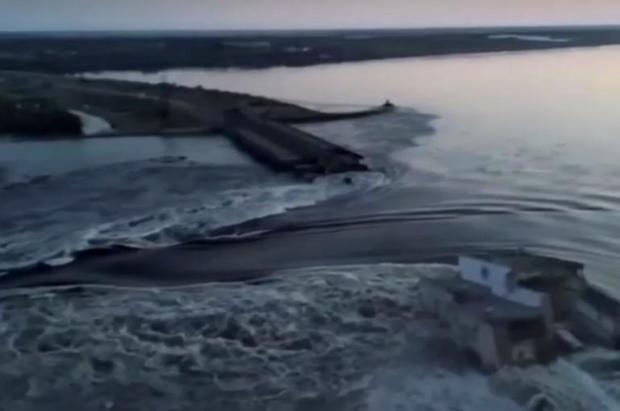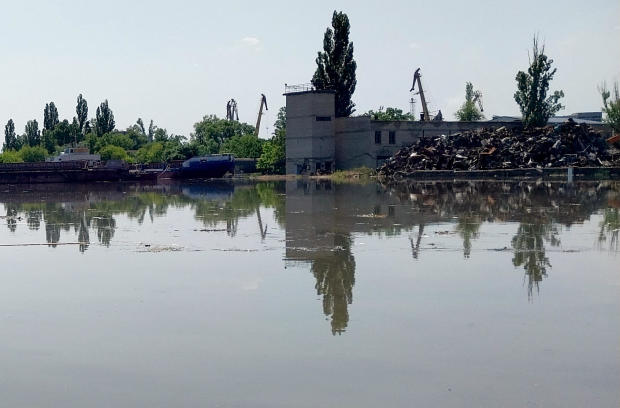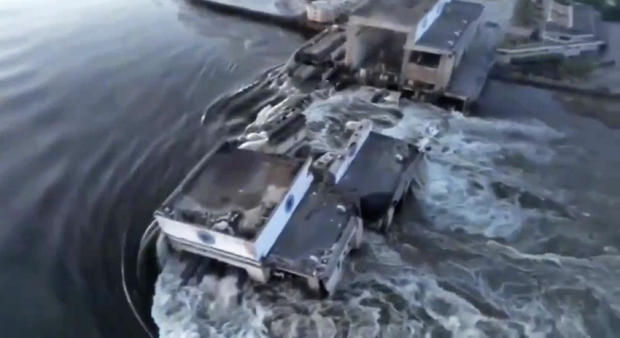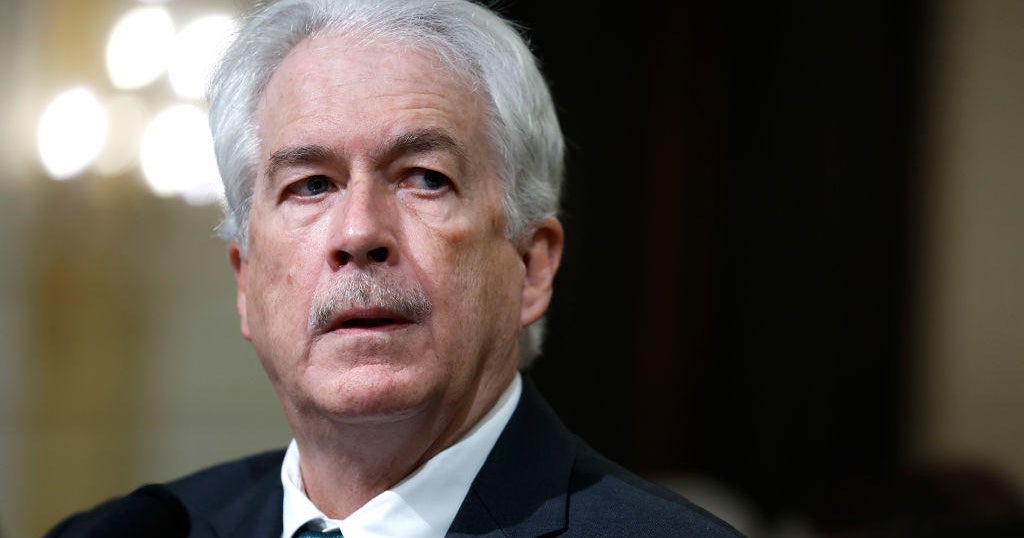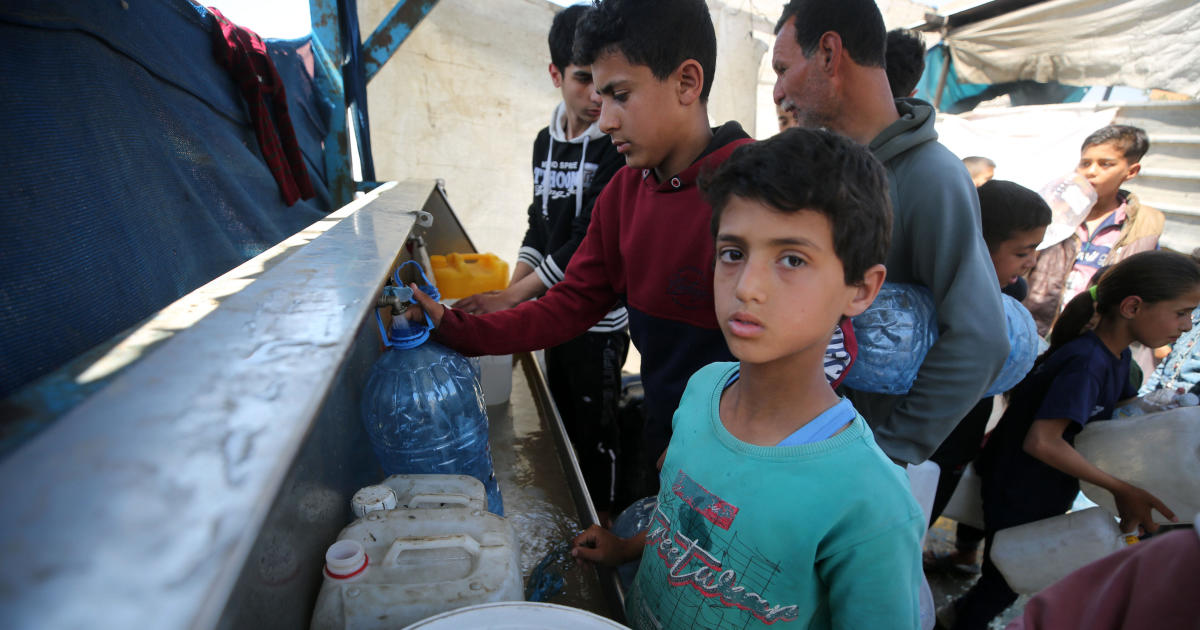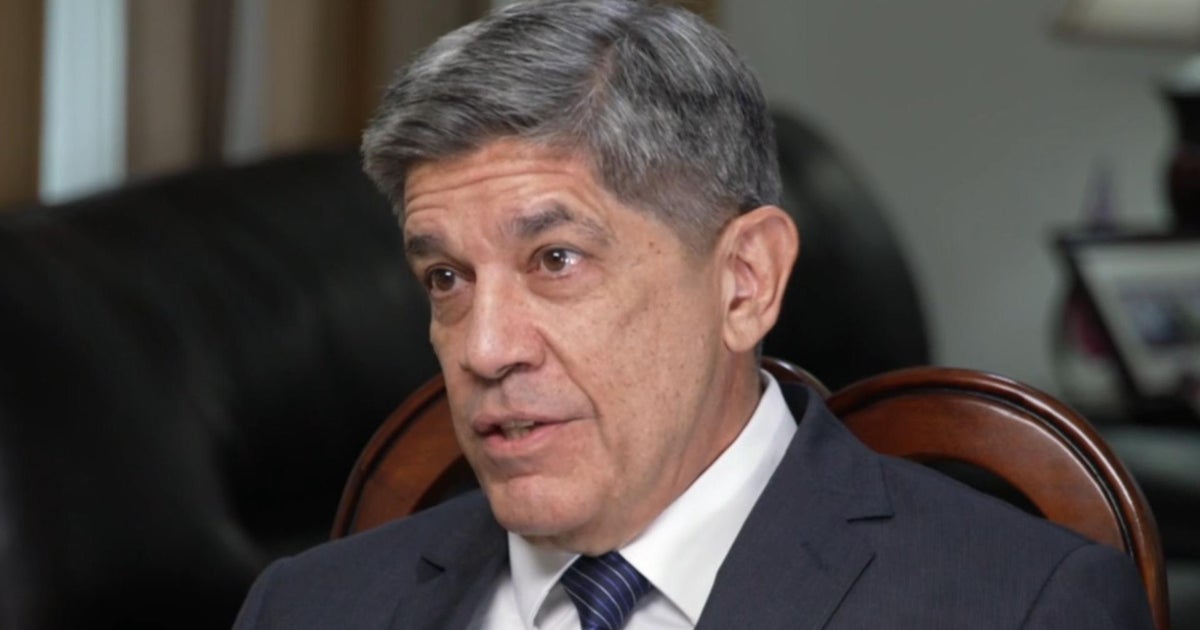Ukraine says Russia blew up major dam "from inside," endangering thousands of people and a nuclear plant
Kyiv, Ukraine — Ukraine on Tuesday accused Russian forces of blowing up a major Soviet-era dam and hydroelectric power station in a part of southern Ukraine that Russia controls, sending water gushing from the breached facility and risking massive flooding. Ukrainian authorities ordered thousands of residents downriver to evacuate.
Russia claimed it was Ukraine's military that damaged the Nova Kakhovka Dam — something Ukraine's president tersely rejected, arguing it was impossible to destroy the facility, which has been under Russian control for months, from the outside.
A local Moscow-installed official said there was "no threat" to major population centers from the floodwaters, but Ukrainian officials warned the breach could have broad consequences, flooding homes, streets and businesses downstream, depleting water levels upstream that help cool Europe's largest nuclear power plant, and draining drinking water supplies for the south in Crimea, which Russia illegally annexed in 2014.
The dam break added a complex new element to Russia's ongoing war in Ukraine, now in its 16th month, as Ukrainian forces were widely seen to be moving forward with a long-anticipated counteroffensive in patches along more than 600 miles of front line in the east and south of the country.
"They blew it up."
President Volodymyr Zelenskyy called an emergency meeting of his country's security and defense council following the dam explosion. A statement released by the president's office following the meeting accused Russian forces of blowing up the dam and hydroelectric power plant it was created for, "from inside," just before 3 a.m. local time on Tuesday.
Zelenskyy and his senior aids had "agreed on a set of international measures, including convening a meeting of the U.N. Security Council, appealing to international environmental organizations and the International Criminal Court, as such actions of the Russians bear clear signs of violation of the Geneva Convention."
The statement said 80 communities were in the "flood zone" and had been ordered to evacuate. Ukraine's prosecutor general Andriy Kostin said on social media that "over 40,000 people are in danger of being flooded," and more than 17,000 were already being evacuated from flooded areas.
Moscow-controlled authorities in the region claimed the dam was partially destroyed by "multiple strikes" launched by Ukrainian forces overnight, unleashing an "uncontrollable" flow of water, the AFP said.
But Zelenskyy was unequivocal, asserting in a tweet after the meeting with his top advisors that "Russia has been controlling the dam and the entire Kakhovka HPP [Hydroelectric Power Plant] for more than a year. It is physically impossible to blow it up somehow from the outside, by shelling. It was mined by the Russian occupiers. And they blew it up. Russia has detonated a bomb of mass environmental destruction. This is the largest man-made environmental disaster in Europe in decades. It is the most dangerous terrorist in the world. And that is why Russia's defeat — a defeat that we'll ensure anyway — will be the most significant contribution to the security of our region, our Europe and the entire world."
Ukrainian Foreign Minister Dymytro Kuleba accused Russia of "inflicting probably Europe's largest technological disaster in decades and putting thousands of civilians at risk" by destroying the dam.
The participants of the meeting agreed on a set of international measures, including convening a meeting of the UN Security Council, appealing to international environmental organizations and the International Criminal Court, as such actions of the Russians bear clear signs of violation of the Geneva Convention.
"This is a heinous war crime," Kuleba said in a tweet. "The only way to stop Russia, the greatest terrorist of the 21st century, is to kick it out of Ukraine."
"A global ecological disaster."
"The terrorists' goal is obvious — to create obstacles for the offensive actions of the armed forces," said Ukrainian presidential aide Mykhaylo Podolyak, adding that "a global ecological disaster is playing out now, online, and thousands of animals and ecosystems will be destroyed in the next few hours."
The statement from Zelenskyy's office following the emergency meeting said the nation's top officials had been "informed that at least 150 tons of machine oil got into the Dnipro River, and there is a risk of further leakage of more than 300 tons" following the explosion.
Videos posted online testified to the breach.
One showed floodwaters inundating a long roadway, another showed a beaver scurrying for high ground from rising waters in Kherson.
Concern over nuclear plant's safety
Ukrainian authorities have long warned that the dam's failure could unleash 4.8 billion gallons of water and flood the southern Kherson region and dozens of other areas where hundreds of thousands of people live, as well as threatening a meltdown at a Russian-occupied nuclear power plant 93 miles away. The Zaporizhzhia Nuclear Power Plant is upstream of the dam, but it relies on water pumped constantly from its reservoir to cool radioactive fuel and other key functions.
Ukraine's state atomic agency said the dam's destruction put the plant at risk, but the statement from Zelenskyy's office said Ukrainian personnel were "keeping the situation under control and have the tools to deal with any developments."
AFP earlier quoted Ukraine's Podolyak as saying, "The world once again finds itself on the brink of a nuclear disaster, because the Zaporizhzhia nuclear power plant lost its source of cooling. And this danger is now growing rapidly."
The head of the International Atomic Energy Agency (IAEA), addressing members Tuesday about the dam break, said the "current assessment" of the U.N. agency was that there was "no immediate risk to the safety of the plant."
Director General Rafael Grossi said the IAEA was following developments "by the minute," but that it was estimated the water supply from the now-draining reservoir should still be sufficient to service the plant for "a few days."
After that, he said the primary backup source for water to cool the plant was a purpose-built cooling pond adjacent at the sprawling facility. That pond, Grossi said, was believed to contain sufficient water to service the plant for "some months," and he stressed that it was "vital that this pond remains in tact."
"Nothing must be done to potentially undermine its integrity," warned Grossi, adding that if it were damaged, the "consequences may be grave." He said he would visit the Zaporizhzhia plant again next week.
Zelenskyy earlier wrote on the Telegram messaging app that the Russians were "terrorists" and the dam's destruction "only confirms for the whole world that they must be expelled from every corner of Ukrainian land. Not a single meter should be left to them, because they use every meter for terror."
Ukraine and Russia have previously accused each other of targeting the dam with attacks, and last October Zelenskyy predicted that Russia would destroy the dam in order to cause a flood.
Officials, experts and residents have for months expressed concern about the flow of water through — and over — the Kakhovka dam. In February, water levels were so low that many feared a meltdown at the Russian-occupied Zaporizhzhia nuclear power plant, whose cooling systems are supplied with water from the Kakhovka reservoir held up by the dam.
By mid-May, after heavy rains and snow melt, water levels rose beyond normal levels, flooding nearby villages. Satellite images showed water washing over damaged sluice gates.
Ukraine controls five of the six dams along the Dnipro River, which runs from its northern border with Belarus down to the Black Sea and is crucial for the entire country's drinking water and power supply. The Kakhovka dam — the one farthest downstream in the Kherson region — is controlled by Russian forces.
